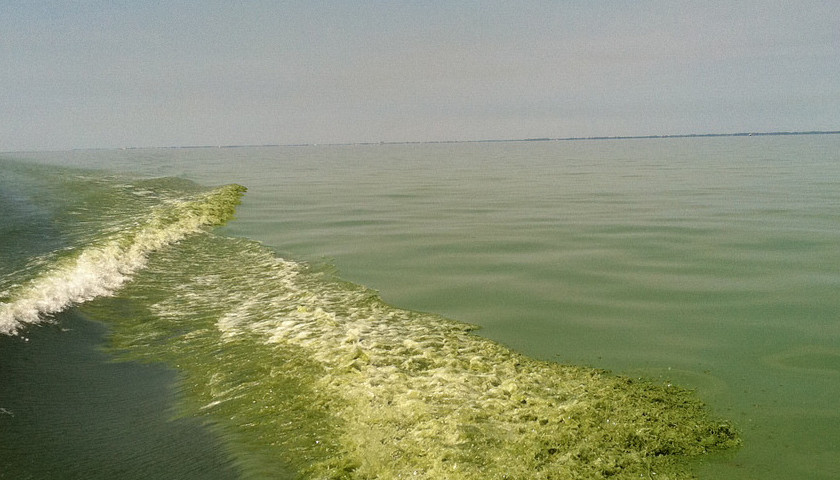by J.D. Davidson
More Ohio farmers can be paid by the state to implement measurers officials say help protect Lake Erie as 10 more counties have been added to the H2Ohio program, which received a $120 million boost in the recently signed state budget.
The program, which offers funding to farmers who use proven conservation practices that limit agricultural phosphorus runoff from fertilizer, now includes 24 northwest Ohio counties. Officials said phosphorus runoff is the primary factor behind algal blooms in Lake Erie.
“Our food growers and producers in the Western Lake Erie Basin want to be part of the solution, as evidence by the 1,800 farmers who participated in the program’s first year,” Gov. Mike DeWine said. “By expanding H2Ohio’s farmer incentive program into more counties in the area, we’ll continue to slow phosphorus runoff, which will ultimately contribute to a reduction in Lake Erie algal blooms over the long term.”
H2Ohio launched in 2019 as an effort to reduce algal blooms, improve wastewater infrastructure and address lead contamination in the state. DeWine said it’s the first comprehensive state program that addresses all aspects of water quality.
Almost 2,000 farmers applied during the program’s first year. The first round of payments went out earlier this year, totaling $197,000 to 154 farmers covering 98,000 acres. Local soil and water conservation district boards review and approve farmer’s plans before payments are made.
Nearly $2.1 million in payments are expected to be made this year, according to Rep. Kyle Koehler, R-Springfield.
Algal blooms happen frequently in the Great Lakes, particularly in Lake Erie, Green Bay and Saginaw Bay, according to the National Oceanic and Atmospheric Administration. They cause fish kills and discolored or foul-smelling water.
The 10 new counties in the program include Seneca, Huron, Erie, Wyandot, Richland, Shelby, Sandusky, Marion, Ottawa and Crawford. They join Williams, Fulton, Lucas, Defiance, Henry, Wood, Paulding, Putnam, Hancock, Van Wert, Allen, Hardin, Mercer and Auglaize.
“We are excited to not only move forward with these important conservation practices in our original target area of the Western Lake Erie Basin but also be able to incorporate these practices into an even greater area,” said Dorothy Pelanda, Ohio Department of Agriculture director. “Interest is incredibly strong and ODA is committed to working with our farmers to help them navigate the process of conserving their water and land resources while advancing water quality in our state.”
– – –
An Ohio native, J.D. Davidson is a veteran journalist with more than 30 years of experience in newspapers in Ohio, Georgia, Alabama and Texas. He has served as a reporter, editor, managing editor and publisher. He is regional editor for The Center Square.








